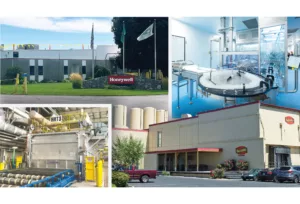Mining industry observers are optimistic about coming year
Silver Valley production is expected to increase
The mining industry in the Inland Northwest and beyond has an optimistic outlook for the coming year, says Mark Compton, executive director of the Spokane-based American Exploration & Mining Association.
In a phone interview conducted during a break at the association’s annual meeting in Nevada, Compton says, “We’ve got 2,000 people gathered in Reno, and there’s a very positive, upbeat vibe going on.”
He says the industry is seeing a surge in demand for minerals and metals, including metals needed to address climate change and for general economic expansion.
“The challenge for the industry lies in being able to meet that demand,” he says. Such challenges include having access to land to explore, timely permitting processes, and recruiting and retaining a skilled workforce.
Closer to home, Travis Swallow, director of stakeholder relations and corporate development at Coeur d’Alene-based Idaho Strategic Resources, says the company has generated record revenue in 2024 and expects continued revenue growth in the coming year.
The company’s primary source of revenue is its gold mining operations near Murray Idaho.
Idaho Strategic Resources (NYSE American: IDR) reported third-quarter net income of $2 million, or 15 cents per diluted share, up from income of $404,000, or 3 cents per share, in the year-earlier quarter.
Revenue totaled $6.2 million in the third quarter, up from $3.3 million in the year-earlier quarter.
In addition to a 60% increase in production this year, revenue and income were aided by gold prices that were up 30% to 40% over the previous year, Swallow says.
The market price for gold was $2,637 per troy ounce as of Dec. 6, up from a 52-week low of $1,985 on Feb. 14, but down from a high of $2,784 on Oct. 30.
The market price for silver was $31.11 per troy ounce as of Dec. 6, up from a 52-week low of $22.09 on Feb. 14 and down from a high of $34.51 on Oct. 23.
Swallow says he expects gold production will remain steady and likely increase in the coming year.
“Now we’ve got three drills turning on site, exploring for more gold,” he says.
Swallow also is anticipating continued exploration of its holdings in central Idaho, which show promise for future production of rare earth elements critical for technology, energy, aerospace, and defense sectors.
He says China recently cut the U.S. off from a source of four critical minerals.
“The U.S. is reliant on one rare earth mine in California, and we’re in need of more domestically,” he says. “Come spring and summer, we’ve got plans for much larger exploration.”
Another Coeur d’Alene-based company, Hecla Mining Co. (NYSE: HL) recently reported third-quarter net income of $1.6 million, or zero cents per share, which represents an upward trend compared with a net loss of $22.6 million, or 4 cents per share, in Q3 2023 and a net loss of $23.7 million, or 4 cents per share, in Q3 2022.
Hecla’s revenue in the third quarter totaled $245.1 million—second only to record revenue of $245.7 million in the previous quarter.
The Lucky Friday silver, lead, and zinc mine near Mullan, Idaho, had a strong quarter, Cassie Boggs, Hecla board chair says in a press release.
“The mill achieved the second-highest throughput in its 80-year history after a record last quarter," Boggs adds.
Hecla is heading into 2025 under the leadership of Rob Krcmarov, who stepped into the CEO position on Nov. 7, succeeding longtime CEO Phillips S. Baker Jr., who retired in May.
Vancouver, British Columbia-based Bunker Hill Mining Corp. continues its endeavor to restart production at the historic silver, lead, and zinc mine, in Kellogg, Idaho, which it purchased in 2021.
Since August, Bunker Hill has received a total of $30.4 million in financing via four installments concluded in mid-November through Scottsdale, Arizona-based silver and gold marketplace Monetary Metals &Co.
“We are making steady progress,” Sam Ash, Bunker Hill president and CEO says in a November press release. “Our ongoing drilling campaign has revealed promising opportunities, allowing us to refine our restart plan for the first half of 2025.”
Meantime, the company plans to issue an updated resource-and-reserve report next quarter.
The company also plans to seek $150 million in financing in the second half of 2025 from the U.S. Export-Import Bank, which had issued a nonbinding letter of interest to Bunker Hill in October. The 15-year loan would accelerate an expansion of the mine after production resumes.
The mine, which began production in about 1885, has been closed since 1981.


_c.webp?t=1763626051)
_web.webp?t=1764835652)

